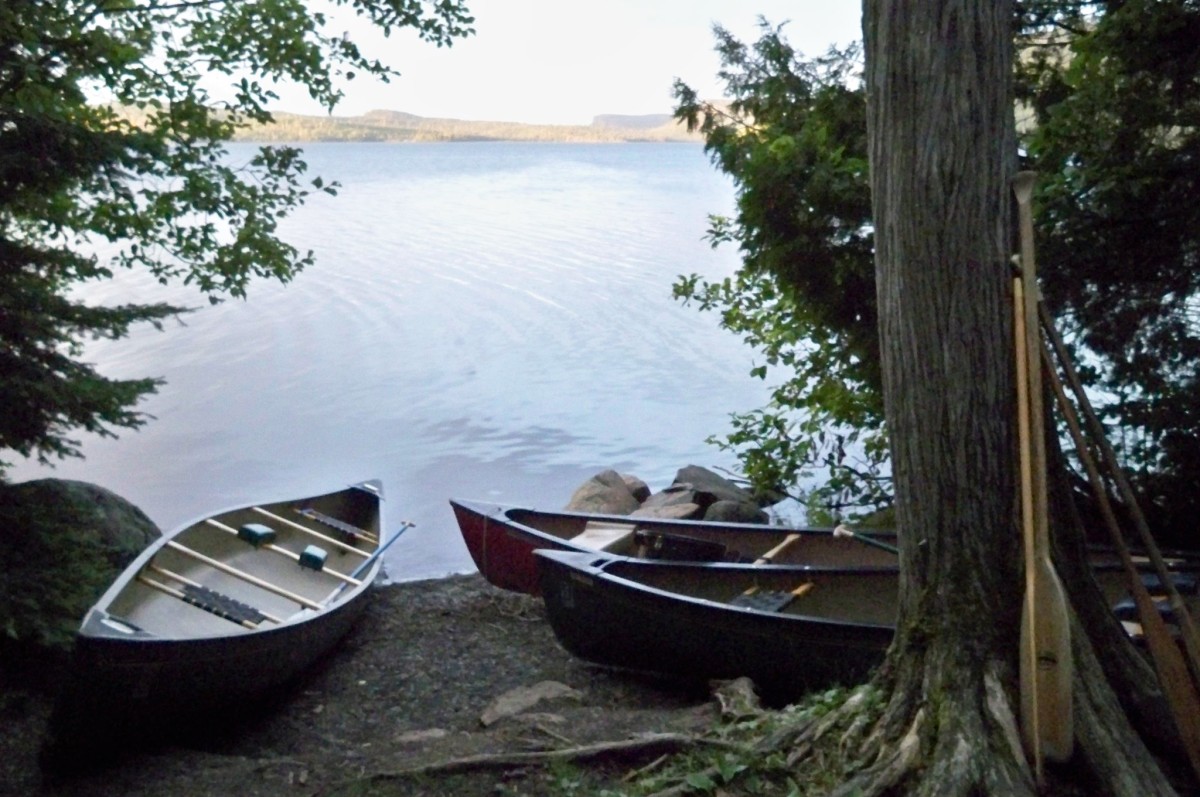Wilderness Sea Kayaking - Trip Planning and Research
Here I am in Skagway,Alaska after just completing my 1,300 mile, 79 day, solo, Inside Passage Sea Kayaking trip between Washington and Alaska.

Sea Kayaking can bring you to some beautiful campsites like this remote wilderness beach at Burnette Bay, British Columbia.

Wilderness Sea Kayaking Trip Planning and Research
Finding Information, Satellite Images, Shuttles, Launch Points
For me, getting ready for a long sea kayaking trip is half the fun. Fiddling with charts, reading guide books, and accumulating all of the necessary gear is all part of the trip planning process. Since the planning process comes first, we will start off here with getting ready for a trip.
Where are we going? Will we be able to drive to the launch point with our kayaks on the roof of our vehicle? Will our trip go from point A to point B or will we paddle in a big circle? If it is going to be a one-way trip, how will we get back to the starting point? Will we be crossing a border into another country? How will we get food and water? What will the weather be like? Are there any dangerous animals where we will be going? How much will the trip cost?
U.S. and Canadian residents have multiple options for long distance kayaking trips. The Inside Passage along the northwest Pacific coast is a world class paddling destination that draws thousands of paddlers to its channels every summer. The Great Lakes along the U.S. / Canadian border presents numerous wilderness paddling opportunities in a fresh water environment. The big man-made lakes of the American southwest like Lakes Powell and Mead and Flaming Gorge Reservoir are incredibly beautiful kayaking destinations in a desert environment. Glacier Bay National Park and Prince William Sound in Alaska are two premier kayaking destinations with opportunities to paddle close to glaciers and ice bergs. And one of my favorites, Yellowstone Lake in Yellowstone National Park in Wyoming with Grizzly’s, geysers and hot springs to keep you entertained.
Most of these destinations have guide books geared specifically for kayakers but some may only have information for power or sail boats. Any of these water bodies that will accommodate commercial traffic or are salt water will be covered by marine charts. Most of the inland lakes will be covered by topographic maps.
Being a little computer savvy will help in planning a long distance kayaking trip no matter where you plan to paddle. Using computer search engines like “Google” and “Bing” can uncover information about even the most obscure destinations. Just type in “key-words” related to your search and you will get access to every bit of information related to the subject. If you want to see if there are any guide books written on a specific area go to “Amazon” and type the name of the area in the search field. If any books are available on the subject, Amazon will most likely have it.
One of the things that I have the most fun with when planning a trip is “Google Earth”. This free program will allow you to get a birds-eye view of any place on Earth. Use the “Place-mark” tool to mark potential campsites, launch spots, and other points of interest. This tool will also give you the coordinates of any spot you mark which can then be marked on your chart or map and loaded into a GPS unit as a POI (point of interest).
Use the "Path" tool to draw a line from one intended campsite to the next. This will give you the distance between the two campsites and help to plan your route. It can also be used to determine the distance of any crossings along the route. "Map View" helps to locate campgrounds, hostels, grocery stores, post offices, and marinas. It even provides links to these places so that you can find out more about the services that they offer. "Street View" gives a look at spots in towns along the route. This tool can even be used to see exactly what a particular launch site looks like. Thousands of photographs have been uploaded to Google Earth using the "Panoramio” tool. These photos will give you ground level glimpses of remote areas along your intended route. If you want to start getting a feeling for what an area looks like, log on to Google Earth and start looking around.
Some long distance kayaking trips can be designed as a circular route where the trip ends right where it began. This is a good plan if you will be paddling in one of the big lakes such as Powell or Yellowstone. Just follow the shoreline and you will eventually end up right back where you started. This tactic can also be used to paddle around large islands such as Vancouver or Admiralty Island.
For one way trips, some type of shuttle must be arranged. If the group is large enough, and multiple vehicles are being used to get to the launch spot, one vehicle can be driven to the end point and used to get back to the starting point at the end of the trip. This is the common method that paddlers have used for years to shuttle boats and people when canoeing and kayaking on rivers.
Ferries are a great way to arrange a shuttle if they service the waterway you intend to travel. The coastlines of British Columbia and Southeast Alaska are crisscrossed by fleets of ferries that can act as the ultimate shuttle vehicle. Almost any conceivable trip in this area could be planned using the ferries as a shuttle. If you use a ferry, make sure to have a set of wheels for your kayak to help get it and all of your gear easily on and off the boat. If you are only going to use the ferry for a return trip, mail a set of wheels to yourself in the town where the ferry will depart. I will tell you how to do this in a later chapter.
Depending on the location of your trip, another possible shuttle strategy is to use a water taxi to either bring you to a starting point or pick you up at the end of your trip. Many water taxi services have kayak racks built onto their boats so your kayak will get transported without a scratch. They can usually land right on a gravel beach where the loading or unloading of gear can take place.
Leaving a vehicle parked anywhere for a long period of time can be a problem. Long term parking can be handled at storage facilities that rent out storage rooms. Your vehicle does not have to be stored in a locked room but the facility should be fenced and ideally monitored by cameras or personnel on site. Ferry terminals sometimes offer long term parking for passengers but the price would quickly add up for anything beyond a couple of weeks. Contact a local paddling club in the town you will be departing from and see if any of the members would be willing to let you park your vehicle at their house. Offer to pay them for their trouble. Leave your keys with whoever you entrust your vehicle to in case they have to move it while you are gone. Do not leave your vehicle parked anywhere without permission. You may return to find it has been towed away, vandalized, or stolen.
Some launch spots are in National Parks like those for Yellowstone Lake and Lake Powell. These lakes require you to register before setting out on your trip and conveniently free long term parking for you vehicle is part of the deal.
For more information on how to plan and execute long distance wilderness sea kayaking trips visit my website at: https://sites.google.com/site/seakayakingtheinsidepassage/





